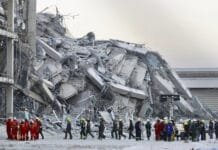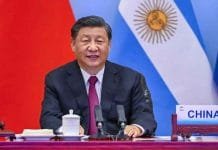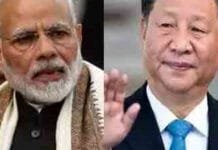China’s Growing Military Power: Analyzing the Current State of the People’s Liberation Army (PLA) and Taiwan Threats
China has long been a prominent player on the global stage, particularly in terms of its military strength and ambitions. With rapid advancements in technology and strategic military reforms, the People’s Liberation Army (PLA) has steadily modernized, enhancing its capabilities across multiple domains. However, recent reports suggest that despite these impressive strides, the Chinese military is still not in a position to effectively execute a successful invasion of Taiwan. In this article, we examine the current status of China’s military modernization, its shortcomings, and the implications for Taiwan’s defense.
The Modernization of the People’s Liberation Army (PLA)
A Comprehensive Transformation Under Xi Jinping’s Leadership
Under the leadership of President Xi Jinping, China’s military reforms have been extensive. One of the primary goals has been to modernize the PLA and ensure its readiness to meet future security challenges. This modernization has seen significant investments in advanced technology, expanding the PLA’s capabilities in various areas such as cyber warfare, space operations, nuclear deterrence, and electronic warfare.
Xi’s leadership has brought about a shift toward a more unified and coordinated force. In an effort to break down traditional barriers between the branches of the military, the PLA has focused on creating a more integrated combat system. However, despite these reforms, the PLA still faces substantial challenges that hinder its ability to conduct joint operations effectively.
Key Areas of Improvement and Challenges in Coordination
China’s military modernization efforts have seen tangible results, with notable improvements in both equipment and doctrine. The PLA now boasts the world’s largest naval fleet, consisting of 370 ships and submarines. Additionally, the PLA Air Force (PLAAF) is equipped with more than 1,300 advanced, fourth-generation fighter jets. The army has also enhanced its ground forces with state-of-the-art equipment and training.
Nevertheless, reports highlight significant shortcomings in the PLA’s ability to conduct joint operations. Although there have been improvements in coordination among the army, air force, and navy, they still lack a fully integrated command and control system. According to the U.S. Department of Defense’s 2024 report, China does not yet have a unified network for sharing intelligence across different branches of the military. This lack of an effective integrated command structure could pose serious obstacles in a large-scale, multi-domain conflict.
Strategic Enhancements in Cyber and Space Capabilities
A particularly notable area of modernization has been the growth of China’s cyber and space capabilities. In recent years, China has made remarkable progress in space technology, achieving significant advancements in satellite communications and reconnaissance. The PLA’s ability to disrupt or destroy satellites, both Chinese and foreign, is a critical part of its broader strategic vision, particularly in the context of future conflicts.
Furthermore, the integration of cyber warfare into the PLA’s strategic framework reflects the growing importance of non-kinetic warfare. The Chinese government has actively pursued cutting-edge cyber capabilities, with the aim of neutralizing adversary communication systems, disabling critical infrastructure, and achieving superiority in future warfare scenarios.
Challenges in Command, Control, and Logistics
The Shortcomings of PLA’s Joint Warfare Coordination
Despite the modernization of military equipment and the adoption of more sophisticated strategies, one critical area where the PLA continues to face challenges is its ability to conduct joint warfare. As noted by the U.S. Department of Defense, the PLA still struggles with issues related to command and control, logistics, and coordination during complex multi-force operations.
The lack of a fully integrated command system means that different branches of the military often struggle to communicate effectively, particularly when it comes to coordinating large-scale operations across land, air, and sea domains. Additionally, PLA’s logistical capabilities remain underdeveloped for sustained operations, particularly for long-range operations like a potential invasion of Taiwan. While the PLA has made strides in this area, the complexities involved in mobilizing vast numbers of troops, equipment, and supplies over long distances continue to pose significant challenges.
Urban Warfare and Specialized Training Gaps
Another area where the PLA faces difficulties is urban warfare. China has historically concentrated on large-scale conventional warfare tactics, focusing on countering external threats through mass mobilization. However, modern military conflicts often require specialized knowledge in urban environments, where conventional warfare tactics may not be as effective.
Reports suggest that while the PLA has engaged in numerous training exercises focused on urban warfare, it has yet to develop the depth of expertise required for effective operations in complex urban environments. In a potential conflict over Taiwan, where the terrain is dense and highly developed, this gap in training could present significant obstacles for the Chinese military.
Taiwan: The Growing Threat and Preparedness
China’s Continued Military Exercises Near Taiwan
In recent years, China has escalated its military activities near Taiwan, with regular incursions by Chinese military aircraft and ships into Taiwan’s airspace and waters. As Taiwan remains a key point of contention between China and the international community, these military drills have become a significant source of tension in the region.
Despite these displays of power, experts argue that China’s military is not currently in a position to successfully invade Taiwan. While the PLA has conducted numerous simulated invasion drills, it still faces substantial challenges in terms of logistics, coordination, and long-range deployment capabilities. Moreover, Taiwan has taken extensive steps to bolster its own defenses, significantly improving its military readiness to defend against any potential Chinese attack.
The Role of Taiwan’s Defense Strategy and International Support
Taiwan has consistently maintained a robust defense strategy that includes not only enhancing its own military capabilities but also securing international support, particularly from the United States. U.S. military aid to Taiwan has been a critical factor in strengthening the island’s defense posture. This support, combined with Taiwan’s own advancements in missile defense, air superiority, and cybersecurity, serves as a powerful deterrent to any Chinese attempts to forcibly reunite Taiwan with the mainland.
China’s military incursions into Taiwan’s airspace and maritime zones have become more frequent in recent months, demonstrating an ongoing pressure campaign. These actions, though provocative, are not necessarily indicative of imminent military action. As noted by the U.S. Department of Defense, while China continues to practice invasion scenarios, it currently lacks the operational capability and coordination needed to mount a successful assault on Taiwan.
The Current Balance of Power and Future Projections
The PLA’s Long-Term Goals and Strategic Shift
The Chinese government has made it clear that its long-term goal is the reunification of Taiwan with the mainland. To achieve this, China is investing heavily in its military capabilities, focusing on developing the technologies and infrastructure necessary for such an operation. However, as detailed in recent reports, the PLA still has significant gaps in its ability to execute a large-scale, joint military operation, particularly in terms of logistics and command coordination.
In the coming years, the Chinese military is expected to continue its modernization efforts, particularly in areas such as cyber warfare, space operations, and missile defense. While the PLA will likely become more capable, experts agree that it will take time before China’s military is fully prepared to launch a successful invasion of Taiwan.
Taiwan’s Defense and the Role of International Partnerships
Taiwan’s defense strategy, coupled with its international alliances, remains a critical factor in deterring any potential Chinese aggression. The island has invested heavily in advanced defense systems, including air defense, missile defense, and anti-ship capabilities. Taiwan’s geographical advantages, combined with its ability to rapidly mobilize its forces, make it a difficult target for any foreign military.
Moreover, Taiwan’s deepening relationships with the United States and other democratic nations provide it with a strategic advantage. Any Chinese attempt to invade Taiwan would likely face significant international opposition, particularly in terms of economic sanctions, military assistance, and diplomatic pressure.




















